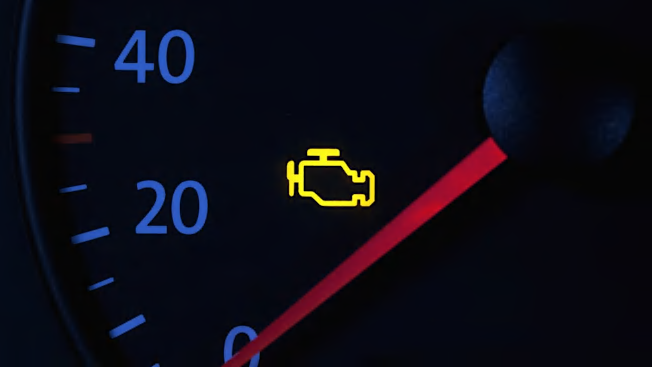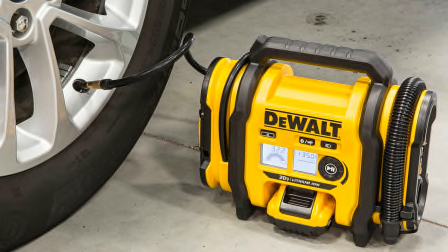What Does the Check Engine Light Look Like, and What Does It Mean?
How to determine whether your car has a loose gas cap—or a serious engine problem

You’re driving along in your car or truck and suddenly a yellow light illuminates on your dash telling you to check or service your engine. If you’re like most car owners, you have little idea about what that light is trying to tell you or how you should react.
What the Check Engine Light Means
The check engine light is part of your car’s so-called onboard diagnostics system. Since the 1980s, computers increasingly have controlled and monitored vehicle performance, regulating such variables as engine speed, fuel mixture, and ignition timing. In modern cars, a computer also tells the automatic transmission when to shift.

Photo: iStock Photo: iStock
What to Do About the Check Engine Light
If the check engine light illuminates, it will either blink or remain constantly illuminated, depending on the problem. A blinking light, or in some cars, a red light instead of a yellow or orange light, indicates a problem that needs immediate attention. Either way, you should have the vehicle checked by a mechanic.
In late-model cars, a blinking light usually indicates an engine misfire so severe that unburned fuel is being dumped into the exhaust system, where it can quickly damage the catalytic converter, leading to an expensive repair. If that happens, you should reduce power and have the car or truck looked at as soon as possible.
If the light is steady, the problem is not an emergency, but you should schedule an appointment as soon as possible. Today’s automotive computers often try to compensate when there’s a problem, so you might not notice deterioration in performance, even though your fuel mileage might be suffering and your vehicle emitting unacceptable levels of hydrocarbons and other pollutants.
“The customer is really, in the long run, potentially hurting their pocketbook by leaving that light on and ignoring it,” Jim Collins, a national training team leader for Ford Motor Co., told CR. In some extreme cases, the car’s computer may reduce power for you as it tries to limit the risk of damage.
Sometimes, the check engine light will illuminate at the same time the car enters what’s called a "limp home" mode. If this happens, you will notice that your car does not have as much power and that some accessories may turn off, but you will still be able to operate both steering and brakes. You may be able to get home or to a nearby dealer or garage. If neither is close by, you may want to pull off the road and call a tow truck.
If the check engine light comes on, here are some tips on what you should do:
Look for a serious problem that requires immediate attention. Check your dashboard gauges and lights for indications of low oil pressure or overheating. These conditions mean you should pull over and shut off the engine as soon as you can find a safe place to do so. On some cars, a yellow check engine light means investigate the problem and a red one means stop right now.
Try tightening your gas cap. This can often solve the problem. Keep in mind that it may take several trips before the light resets. Some vehicles have a separate indicator that warns of a loose gas cap.
Reduce speed and load. If the check engine light is blinking or you notice any serious performance problems, such as a loss of power, reduce your speed and try to reduce the demands on the engine. For example, it would be a good idea to stop towing a trailer. Have the car checked as soon as possible to prevent expensive damage.
Use built-in diagnostic services, if available. Many modern cars have integrated remote diagnostic capabilities, with the ability to report on trouble codes and schedule a service appointment. Today, many automakers—including Stellantis, Ford, Hyundai, Jaguar/Land Rover, and Volvo—support remote diagnostics and the ability to schedule a service appointment.
Decoding Dashboard Warning Lights
You might have noticed the gallery of icons on your dashboard when you start your car. On the "Consumer 101" TV show, Consumer Reports’ expert Jen Stockburger explained to host Jack Rico what those warning lights look like and what they mean.




















